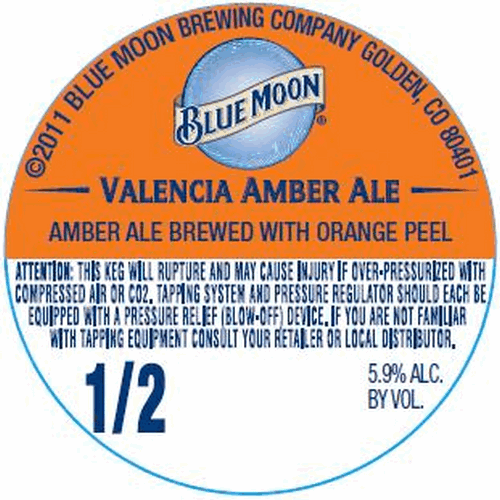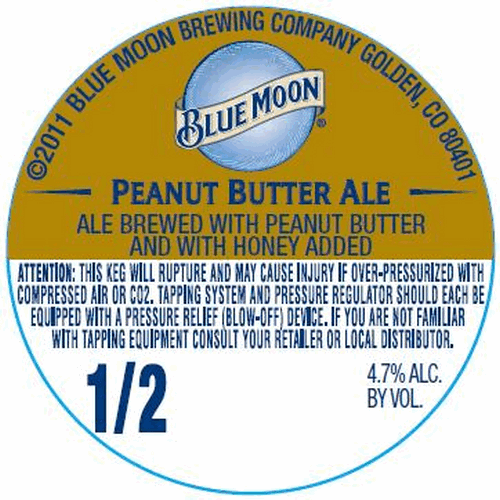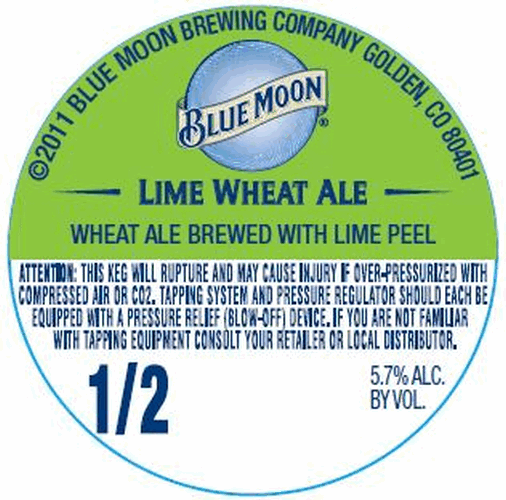
Peach Porch Lounger is New Belgium’s most recent Lips of Faith beer. This beer is a collaboration beer between New Belgium and musician G. Love. Check out the video talking about the collaboration here.
The beer is a saison style brewed with molasses, lemon peal, and peach juice.
Right off the bat, this beer shows signs of Brettanomyces used in secondary. The funky, tropical fruity yeast is also complemented by a fruity aroma typically attributed to peaches and other stone fruits.
This beer has an incredibly complex taste. Fruity and floral flavors along with a spicy finish from the yeast. Along with the peach, there are also hints of pineapple and lemon peal flavors. The peach juice blends well with this beer, giving it a nice, sweet compliment, but not overpowering the other elements.
The malt gives this beer a bready flavor. The 9.4% alcohol gives this beer some heat. The yeast, peach juice, molasses, and lemon peel give this beer a complex and hearty fruitiness. Together, this beer tastes like a fresh, warm biscuit topped with fruit marmalade. Absolutely delicious.

5 new keg labels from Blue Mooon. It’s interesting that these approvals are for kegs. I don’t think I’ve ever seen a Blue Moon seasonal on tap anywhere, but I could be wrong.
I’m not a fan of Blue Moon, but their seasonals are sometimes ok. Seeing this list though makes me wonder. It looks like they are throwing darts at a list of beer types in hopes at least one of them sticks. That tends to be the way their parent company, SAB-MillerCoors works. Miller is abandoning their MGD 64 Lemonade because it failed to appeal to a wide audience. I imagine the same thing will happen here.
Lemon Wheat Ale, Lime Wheat Ale and Valencia Amber Ale all seem too similiar to make sense. Not to mention Blue Moon is usually served with either an orange or lemon slice in it. The flavor is probably made with an overhyped, artifical sweetner.
Peanut Butter Ale just sounds gross. I like peanut butter and honey, and I think they could make for unique ingrediants in a beer, but I don’t believe that Blue Moon will use real ingrediants or use them in a subtle, tasteful way.
I am curious to try the Farmhouse Ale though. Farmhouse is often an interchangable name with saison. However I think the craft brewers who use the name farmhouse will have a funky tartness going on in the beer as opposed to saisons, that aren’t usually sour. Blue Moon is not a craft brewer so this beer will likely not be similar to either style and will likely taste the same as their White Ale, maybe just a bit drier. Why can’t they make something different, rather than just variations of their White Ale?
It has been over a month since I last wrote on here. Despite originally planning on using this as a means to talk about my homebrews, I have failed thus far. So, let’s make up for lost time.
I have brewed 6 different beers in the past month. Through this, I have changed my workflow when brewing and I have decreased the amount of time and effort it takes to brew. After each beer, I decide that I am exhausted and need to take a break for a couple of weeks. That never lasts, I get the itch to brew again a few days later. Below are the beers I have made:
Pale Ale: This was the first beer I made. I wrote this recipe entirely from scratch and intentionally wrote the recipe to be as basic as possible for the sake of keeping it simple. Pale malted barley and centennial hops. Once the beer was brewed and ready to go into the fermenter, I measured the gravity (density of sugar) and it was spot on to my calculations. Awesome! One week later, after all the visual signs of fermentation disappeared, I checked the gravity and found that it didn’t drop as much as it was supposed to. Meaning instead of my beer having 5% alcohol, it was only at 3%. I later learned that the most likely reason this happened was due to my inability to keep a consistent temperature during fermentation. Yeast is very temperature dependent and different yeast strains ferment at different temperatures. When the yeast notice a rise in temperature, they work harder. When the yeast notice a decrease in temperature, they go into hibernation. The yeast I was using was meant to ferment at 70º F. Not the easiest thing to do in Las Vegas during the summer. With this beer, I learned how to maintain that temperature.
I continued the process to finish this beer anyways. Despite it not being perfect, I wanted to see what it would taste like finished. I dry hopped the beer and let it sit for another week and then I bottled it and let it condition and carbonate in the bottle for two weeks.
A few days ago I cracked one of the bottles open to taste it. To my surprise, it was great. Despite the failed fermentation, it tasted like a normal beer. It didn’t have the watery taste that art artificial beers have (Bud/Miller/Coors) and it didn’t seem sweet from the residual sugars. It had a very dry, crisp finish and was very refreshing. The aftertaste was however a bit bland compared to the initial taste. I had intentionally used few ingredients so I could have a blank slate. Sure enough, this gave the aftertaste an expected simple taste to it, but I was suprised that it wasn’t more present.
Black IPA: I initially was planning on brewing regular IPA next, but I was too excited for this beer that I couldn’t wait and decided to brew this one next. Building upon my pale ale recipe, I added two more malts: crystal malt to give it another element of sweetness, and carafa malt to make the beer black in color with a slight roastiness. I still used only one variety of hop, but this time I used cascade hops.
I had brewed only two gallons of the pale ale. This beer, and all the other beers that I made, I brewed three gallons. That means more grains. Not to mention the fact that this was going to have a higher alcohol content than the pale ale so even more grains were used. Long story short, I mashed the grains with too much water and spilled some. While mashing I also had a hard time keeping a consistent temperature. When mashing you typically keep the water between the mid 140ºs to high 150ºs. Any lower and the sugar conversion doesn’t take place. Any higher and you stop the conversion process. Long story short, I measured the gravity before the boil and I was way off. Not wanting to have another weak beer, I made a few changes to the recipe and added some turbinado sugar to bring the sugar content up. After the beer finished the first stage of fermentation I tested the gravity, and it was right at it needed to be, bringing the beer to 6.8% alcohol content!
This beer is still carbonating so I haven’t had a chance to taste the finished product yet. But the taste I took a taste when I was bottling it makes me very excited to drink this! It has a very hoppy aroma but isn’t too bitter. Cascade hops aren’t really known for their bitterness. The addition of the crystal and carafa malts give the beer a nice malty body.
IPA: The original plan was that this beer and the black IPA would be the exact same beer except with the black IPA getting the carafa malts to make it black. My intention was to make very similar beers with only one different ingredient to taste the difference that it makes. This was originally going to be brewed second. It would be the same recipe as the pale ale, but with more hops and an additional malt. The black IPA would then be the exact beer as this, but with the carafa malt. Because I brewed the black IPA before this one, and had the mishaps that I did, I brewed this one a bit differently. I was very cautious and scared that my sugar levels would be low again. Despite not spilling or boiling over the wort, I was still worried. I decided to add less water before the boil than I did before. This would make the sugar level a little bit more concentrated. I finished brewing, took a gravity measurement and was shocked. I wasn’t too low on sugar at all. It was crazy high, and I didn’t even add sugar like I did to the black IPA! The result was that this beer finished with an alcohol content of 8.5%.
This beer is also still carbonating and should be ready to drink about the same time as the black IPA (I brewed them 2 days apart). This beer tastes very different from the black IPA, despite the original plan of them being very similar. They have the same amounts of hops in them, but since this has a higher alcohol level, the residual sugars mask some of the bitterness and leave mostly just hop aroma. The added alcohol also give it a slightly thicker body, making this a very smooth beer with a very balanced hop level and a high alcohol content.
Brown Ale/Porter: I’m grouping these together because they were brewed one day apart and have a combined story. I kinda used recipes for these. I used the ingredients that the recipes called for but I changed the amounts used to match the alcohol and bitterness levels that I was looking for. I also changed the recipe for the brown ale because I wanted to try adding some dried maple syrup. Basically, it’s maple syrup that was boiled down to a solid and broken up into small chunks. This sounded like it would be awesome with the brown ale.
The first 3 beers I used a California strain of yeast. These two beers used two different British yeast strains. Both of the yeast strains wanted to ferment at 65º. I kept the first three beers at 70º, so I figured that this wouldn’t be too hard. Wrong. Keeping these at 65º in the summer was a bad idea. First, I mentioned earlier that if the temperature is higher, then the yeast work faster. This sounds like a good thing except for the fact that when the yeast work faster, they put out some off flavors. Specifically, it makes the beers smell and taste like alcohol. The brown ale fermented to the right level that it should have, 6.4%, however it tastes like it is in the range of 8-10% but without the sweetness/body to balance it. I still thought it tasted good, just not what I was planning for.
The porter on the other hand, suffered due to my attempts to control the temperature. The wild temperature swings caused a stuck fermentation for the porter. Unlike the pale ale, this time I tried to fix it. I added the California yeast I had used before and raised the temperature to 70º. Unfortunately, that didn’t work. The porter stopped at 4.3% rather than 6.3% alcohol. In addition to that, it has the strong alcohol taste that the brown ale has.
Both these beers will be bottled in the next week or two and will be done conditioning about 3 weeks after that. It will be interesting to see how they turn out.
6: I’m not sure what style to call this. I’ve been calling it 6 since it’s the sixth beer I’ve brewed. After the temperature issues I’ve had, I started to be intrigued by the saison style of beer. Saisons were brewed by farmers in Belgium and left to ferment in barns during the summer. The result is a yeast strain that ferments up to 90º! Living in Las Vegas, I was excited to try this yeast. I wrote the recipe from scratch by first writing a recipe for a saison the same way I did with the brown ale and porter, by copying ingredients and adjusting the amounts for a saison recipe. I then re-wrote it substituting the grains in the recipe with the leftover grains I had from the first 5 beers. Since I am very fond of black beers, I threw in the rest of the carafa I used from the black IPA. I chose hops based off of what I had leftover as well. Saisons are not typically hoppy beers but I decided to try making this one moderately hoppy, about the level of a pale ale. I used the hops I had that were not over the top to try and keep them from being overpowering. I went to the local homebrew shop to buy the yeast but they didn’t have the specific yeast I wanted. I instead grabbed a different Belgian yeast that will ferment up to 78º. I typically keep my house between 70º-75º so I decided it should be fine.
Saisons are typically light in color and light in hops. They have a very crisp, dry finish and are a little peppery from the Belgian hops that are typically used. Mine is a hoppy, black saison. I figured this will either be awesome or terrible.
I just brewed this beer last friday so it is still fermenting and I haven’t taken a gravity reading or taste since I put it in the fermenter. That one taste was pretty good though! The taste will change quite a bit as the sugars are converted into alcohol and the hops balance out, but so far it is at a good starting point!
There you have it. Six beers in four weeks. I am going to wait to brew again until I bottle the brown ale and the porter. I haven’t decided what I’ll brew next. I am going to keep away from making traditional British beers for now until the temperature drops outside. I am planning on ordering the specific Belgian yeast I’m looking for online and will brew several beers with it. For sure a traditional saison and an IPA using the yeast. Knowing me, I’ll probably make it a black IPA. Whatever I brew next, I’ll be sure to actually start writing about it and posting the pictures I take!







